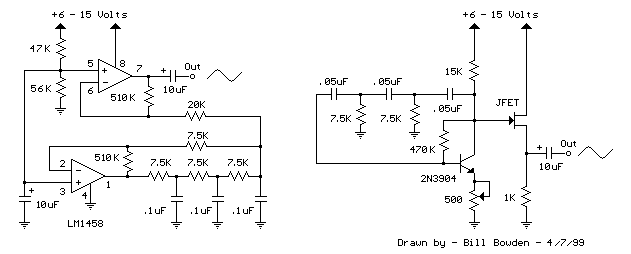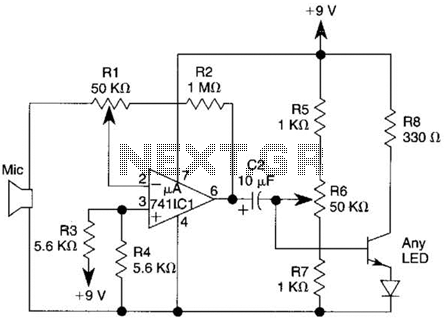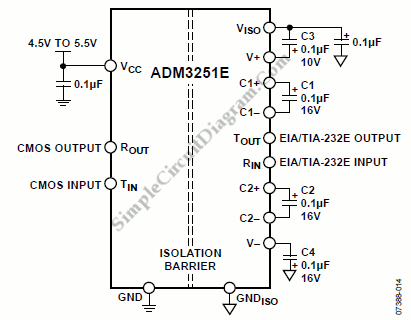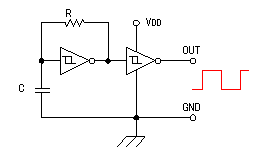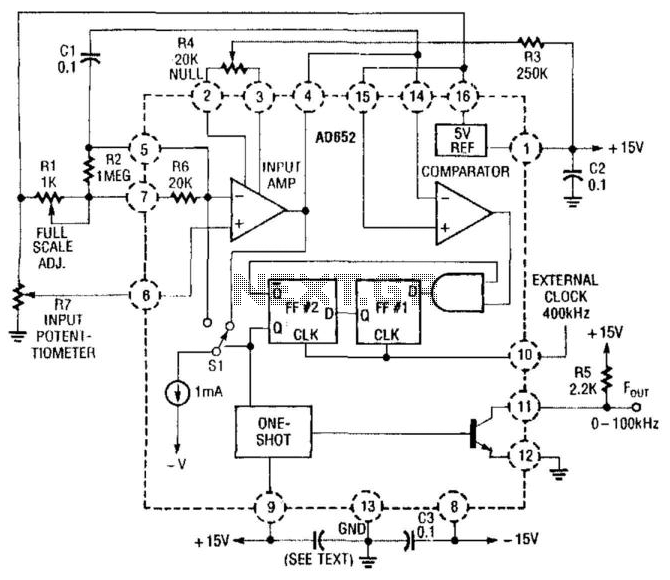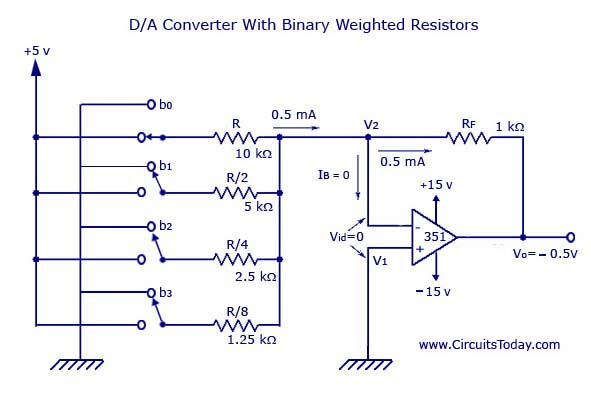
sine wave to ttl converter

The current circuit is designed to convert sinusoidal input signals into TTL output signals. It is capable of handling input signals greater than 100 mV and operates effectively at frequencies up to approximately 80 MHz. Transistor T1 is configured in a common-emitter arrangement and is biased by a voltage divider consisting of resistors R3 and R5, which sets the voltage across output resistor R1 to about half the supply voltage. When the circuit receives a signal with an amplitude between 100 mV and the TTL level (approximately 2 V RMS), it produces rectangular output signals. The lowest frequency that the prototype can process is around 100 kHz for an input level of 100 mV, and about 10 kHz for input signals at TTL levels. Resistor R6 maintains the input resistance at approximately 50 ohms, a standard value in measurement techniques, ensuring that the impact of long coaxial cables on the signal remains minimal. In circuits with sufficient limits, R6 may be excluded, resulting in an increase in input resistance to 300 ohms.
The circuit operates by utilizing a common-emitter transistor configuration, which is well-suited for signal amplification and switching applications. The biasing arrangement formed by resistors R3 and R5 is critical for establishing the correct operating point of the transistor, allowing it to function effectively within the desired frequency range. When a sinusoidal input signal is applied, the transistor amplifies the signal, converting it into a rectangular waveform suitable for TTL logic levels. The transition from sinusoidal to rectangular signals is facilitated by the inherent switching characteristics of the common-emitter configuration, which provides a rapid response to changes in the input signal.
The selection of resistors R6 is important for maintaining the integrity of the input signal. By keeping the input resistance at approximately 50 ohms, the circuit minimizes reflections and signal degradation that can occur when long coaxial cables are used. This is particularly important in high-frequency applications, where signal integrity is paramount. The ability to omit R6 in certain circuit configurations allows for flexibility in design, accommodating various input signal conditions without compromising performance.
Overall, this circuit serves as an effective solution for converting sinusoidal signals to TTL levels, making it suitable for a range of applications in digital electronics and signal processing. Its design considerations ensure robust operation across a wide frequency spectrum while maintaining signal fidelity.The present circuit is intended to convert sinusoidal input signals to TTL output signals. It can handle inputs of more than 100 mV and is suitable for use at frequencies up to about 80 MHz. Transistor T1, configured in a common-emitter circuit, is biased by voltage divider R3 R5 such that the potential across output resist or R1 is about half the supply voltage. When the circuit is driven by a signal whose amplitude is between 100 mV and TTL level (about 2 V r. m. s. ), the circuit generates rectangular signals. The lowest frequencies that could be processed by the prototype were around 100 kHz at an input level of 100 mV, and about 10 kHz when the input signals were TTL level. Resistor R6 holds the input resistance at about 50 , which is the normal value in measurement techniques.
It ensures that the effects of long coaxial cables on the signal are negligible. If the converter is used in a circuit with ample limits, R6 may be omitted, whereupon the input resistance rises to 300 . 🔗 External reference
The circuit operates by utilizing a common-emitter transistor configuration, which is well-suited for signal amplification and switching applications. The biasing arrangement formed by resistors R3 and R5 is critical for establishing the correct operating point of the transistor, allowing it to function effectively within the desired frequency range. When a sinusoidal input signal is applied, the transistor amplifies the signal, converting it into a rectangular waveform suitable for TTL logic levels. The transition from sinusoidal to rectangular signals is facilitated by the inherent switching characteristics of the common-emitter configuration, which provides a rapid response to changes in the input signal.
The selection of resistors R6 is important for maintaining the integrity of the input signal. By keeping the input resistance at approximately 50 ohms, the circuit minimizes reflections and signal degradation that can occur when long coaxial cables are used. This is particularly important in high-frequency applications, where signal integrity is paramount. The ability to omit R6 in certain circuit configurations allows for flexibility in design, accommodating various input signal conditions without compromising performance.
Overall, this circuit serves as an effective solution for converting sinusoidal signals to TTL levels, making it suitable for a range of applications in digital electronics and signal processing. Its design considerations ensure robust operation across a wide frequency spectrum while maintaining signal fidelity.The present circuit is intended to convert sinusoidal input signals to TTL output signals. It can handle inputs of more than 100 mV and is suitable for use at frequencies up to about 80 MHz. Transistor T1, configured in a common-emitter circuit, is biased by voltage divider R3 R5 such that the potential across output resist or R1 is about half the supply voltage. When the circuit is driven by a signal whose amplitude is between 100 mV and TTL level (about 2 V r. m. s. ), the circuit generates rectangular signals. The lowest frequencies that could be processed by the prototype were around 100 kHz at an input level of 100 mV, and about 10 kHz when the input signals were TTL level. Resistor R6 holds the input resistance at about 50 , which is the normal value in measurement techniques.
It ensures that the effects of long coaxial cables on the signal are negligible. If the converter is used in a circuit with ample limits, R6 may be omitted, whereupon the input resistance rises to 300 . 🔗 External reference
